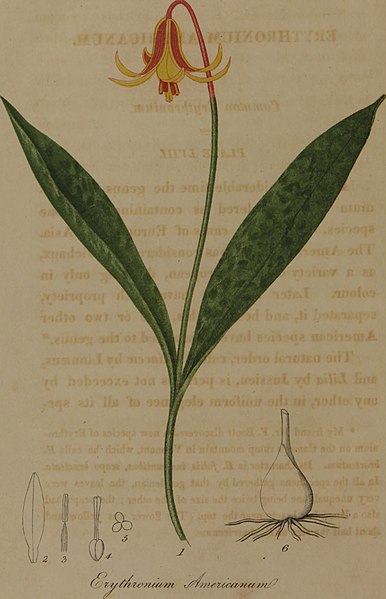File:American medical botany- being a collection of the native medicinal plants of the United States, containing their botanical history and chemical analysis, and properties and uses in medicine, diet and (14740719936).jpg

Original file (1,752 × 2,720 pixels, file size: 437 KB, MIME type: image/jpeg)
Captions
Captions
Summary edit
| DescriptionAmerican medical botany- being a collection of the native medicinal plants of the United States, containing their botanical history and chemical analysis, and properties and uses in medicine, diet and (14740719936).jpg |
English: Identifier: 2543055RX3.nlm.nih.gov |
| Date | |
| Source |
https://www.flickr.com/photos/internetarchivebookimages/14740719936/ |
| Author | Internet Archive Book Images |
| Permission (Reusing this file) |
At the time of upload, the image license was automatically confirmed using the Flickr API. For more information see Flickr API detail. |
| Flickr tags InfoField |
|
| Flickr posted date InfoField | 28 July 2014 |
Licensing edit
This image was taken from Flickr's The Commons. The uploading organization may have various reasons for determining that no known copyright restrictions exist, such as: No known copyright restrictionsNo restrictionshttps://www.flickr.com/commons/usage/false
More information can be found at https://flickr.com/commons/usage/. Please add additional copyright tags to this image if more specific information about copyright status can be determined. See Commons:Licensing for more information. |
| This image was originally posted to Flickr by Internet Archive Book Images at https://flickr.com/photos/126377022@N07/14740719936. It was reviewed on 24 September 2015 by FlickreviewR and was confirmed to be licensed under the terms of the No known copyright restrictions. |
24 September 2015
File history
Click on a date/time to view the file as it appeared at that time.
| Date/Time | Thumbnail | Dimensions | User | Comment | |
|---|---|---|---|---|---|
| current | 13:53, 24 September 2015 |  | 1,752 × 2,720 (437 KB) | Fæ (talk | contribs) | == {{int:filedesc}} == {{information |description={{en|1=<br> '''Identifier''': 2543055RX3.nlm.nih.gov<br> '''Title''': [https://www.flickr.com/photos/internetarchivebookimages/tags/bookid2543055RX3.nlm.nih.gov American medical botany: being a collecti... |
You cannot overwrite this file.
File usage on Commons
There are no pages that use this file.